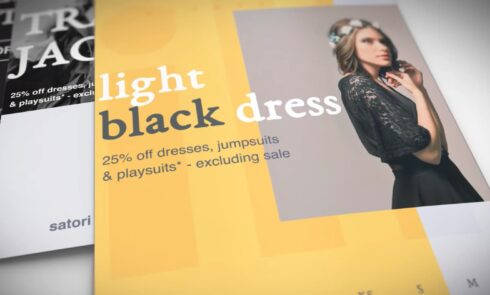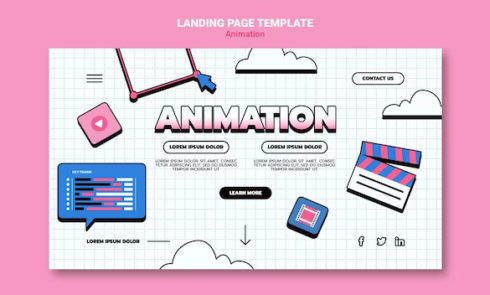Engaging and captivating web design is essential in today’s digital landscape, and one powerful tool at your disposal is scroll animations. In this article, we delve into the intricacies of scroll animation examples, exploring their benefits, best practices, and how they can elevate user experiences.
What Are Scroll Animations?
Scroll animations breathe life into the user experience, infusing interactivity and motion into a webpage. These visual effects respond to scrolling actions, introducing elements like sliding graphics, fade-ins, transformations, and other dynamic movements.
Their applications range from highlighting products and providing visual feedback to making long-form content more engaging.
Benefits and Best Practices
While scroll animations add flair to web design, their effectiveness hinges on thoughtful implementation. To optimize their impact, it’s crucial to use them with intent, avoiding overwhelming visitors.
Testing across devices ensures responsiveness and functionality without compromising page speed. Strategic placement and timing make scroll-triggered animations seamless, guiding users through a natural flow.
Enhancing User Experience: Scroll Speed Animation
One captivating scroll animation example is the scroll speed animation, dynamically setting text and visuals into motion as users navigate the page. In our 2022 Year-In-Review, colorful numbers unfold as you scroll, adding an interactive touch to statistical information.
Travel website Tortuga Trip seamlessly incorporates scroll speed animation, enhancing the visual appeal of compasses gliding over each other.
Fade-ins: Adding Dynamics to Content
Scroll-triggered fade-ins introduce text and visuals with a gradual reveal, emphasizing their importance. In the World Heart Federation’s design by Vev, fade-ins maintain momentum amid extensive content, urging visitors to explore further.
Animated Charts and Data Visualizations
Transforming data into an engaging narrative, animated charts and data visualizations play a crucial role. The Sustainability Report creatively presents environmental issues through animated bar charts and interactive pie charts, making data consumption exciting and informative.
Sticky Scrolling: Breaking Up Content Dynamically
Sticky scrolling fixed elements in place while allowing other content to move against them. Service Now’s report by Vev expertly incorporates sticky scrolling, anchoring interviews in place while smoothly revealing questions and answers in two columns.
Horizontal Scrolling: A Novel User Experience
Horizontal scrolling offers a unique way to present content, as seen in Politico’s Vev-built design. Illustrations with hotspots reveal information about repurposing materials, adding a layer of curiosity for readers.
Animated Transitions: Navigating Sections Seamlessly
Smooth transitions signal a shift to new website sections. Momenti’s design showcases subtle yet impactful transitions, enhancing the user experience with animated icons and a seamless shift between project carousels.
Morphing Animations: Mesmerizing Transformations
Morphing animations add a mesmerizing touch by transforming graphics or visuals as users scroll. Office Studio’s black and white design showcases a chair morphing into different positions, creating a captivating scrolling experience.
Scaling: Highlighting Creative Portfolio
Scaling emphasizes certain features by adjusting their size during navigation. Bruce Mau Design creatively uses scaling to draw attention to featured projects, standing out in its originality and effectively showcasing their work.
Three-dimensional Scrolling: Immersive User Experiences
Creating an illusion of depth, 3D websites offer immersive experiences. Muhammad Bilal Khan’s digital portfolio uses scrolling to navigate through his office, providing a virtual tour with engaging text about his work.
Scroll Animation Examples in Advertising
In the dynamic world of advertising, scroll animations are increasingly becoming a go-to strategy for brands aiming to capture audience attention and convey messages in innovative ways. Here are some notable examples:
Nike’s Scroll Speed Dynamic Showcases
Nike, renowned for pushing creative boundaries, utilizes scroll speed animations to showcase its latest athletic gear. As users scroll down the webpage, the images of athletes dynamically adjust their pace, creating an engaging visual experience.
This scroll animation not only highlights the products but also embodies the brand’s commitment to movement and athleticism.
Coca-Cola’s Fade-ins for Storytelling
Coca-Cola employs scroll-triggered fade-ins to narrate compelling brand stories on its website. As users scroll, each section of the story smoothly fades in, unveiling vibrant visuals and emotive content. This technique enhances user engagement by gradually revealing content, keeping the audience intrigued and connected to the brand narrative.
Apple’s Animated Charts for Product Features
Apple, known for its sleek and modern aesthetics, incorporates animated charts and data visualizations in its product pages. When users scroll through the features of a new device, animated graphs dynamically present performance metrics, making technical information more digestible and visually appealing.
Samsung’s Sticky Scrolling for Product Comparison
Samsung’s product comparison pages feature sticky scrolling to enhance user interactions. As visitors scroll through specifications, key features remain fixed on the screen, allowing for easy comparison without losing context.
Google’s Horizontal Scrolling for Pixel Launch
During the launch of a new Pixel device, Google’s website incorporates horizontal scrolling to present a visual journey of the smartphone’s evolution. Users scroll sideways through a timeline of Pixel models, each accompanied by interactive hotspots that reveal specific features and advancements.
Creating Scroll Animations with Vev
Whether incorporating scroll speed, sticky position, or fade-ins, Vev simplifies the process with pre-built effects and an intuitive drag-and-drop UI. Designers can effortlessly publish their creations, either hosting them on Vev or embedding them anywhere on the web.
Conclusion
Scroll animations serve as a dynamic tool for enhancing user experiences in web design. By exploring various scroll animation examples and best practices, designers can unlock new dimensions of creativity and captivate visitors with interactive and visually stunning content. With the right balance and strategic implementation, scroll animations can truly elevate the art of web design.

